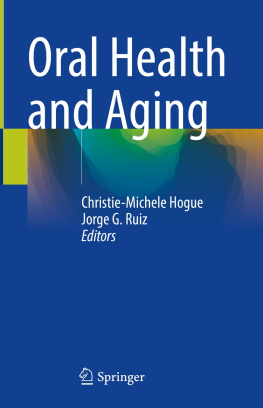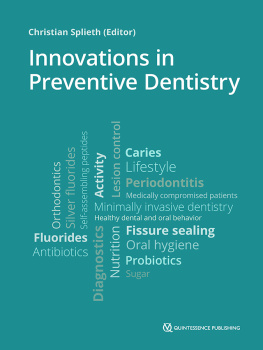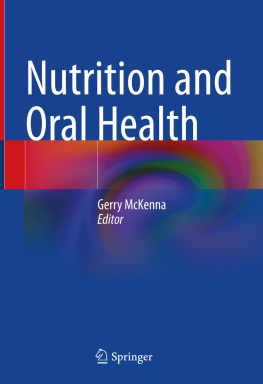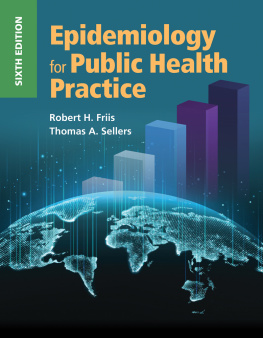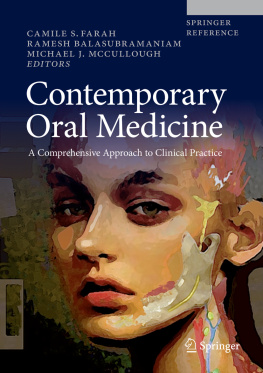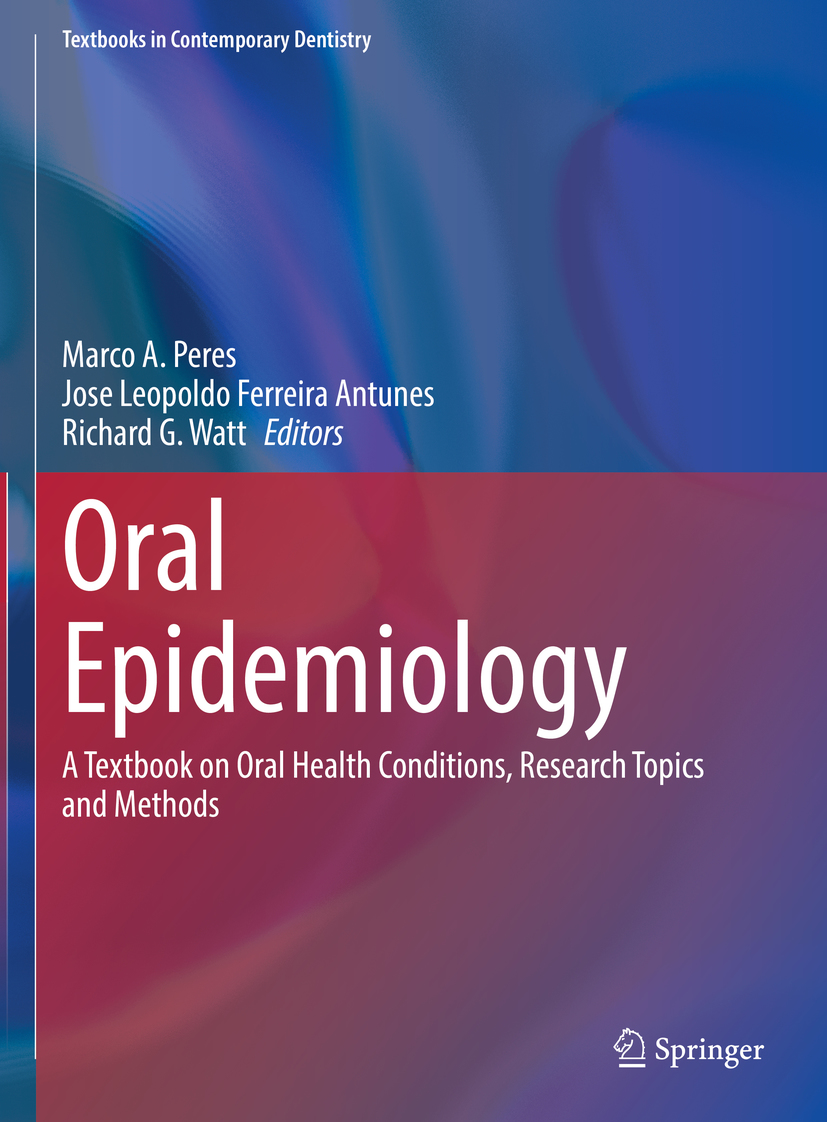Textbooks in Contemporary Dentistry
This textbook series presents the most recent advances in all fields of dentistry, with the aim of bridging the gap between basic science and clinical practice. It will equip readers with an excellent knowledge of how to provide optimal care reflecting current understanding and utilizing the latest materials and techniques. Each volume is written by internationally respected experts in the field who ensure that information is conveyed in a concise, consistent, and readily intelligible manner with the aid of a wealth of informative illustrations. This textbook series presents the most recent advances in all fields of dentistry, with the aim of bridging the gap between basic science and clinical practice. It will equip readers with an excellent knowledge of how to provide optimal care reflecting current understanding and utilizing the latest materials and techniques. Each volume is written by internationally respected experts in the field who ensure that information is conveyed in a concise, consistent, and readily intelligible manner with the aid of a wealth of informative illustrations. Textbooks in Contemporary Dentistry will be especially valuable for advanced students, practitioners in the early stages of their career, and university instructors. will be especially valuable for advanced students, practitioners in the early stages of their career, and university instructors.
More information about this series at http://www.springer.com/series/14362
Editors
Marco A. Peres , Jose Leopoldo Ferreira Antunes and Richard G. Watt
Oral Epidemiology
A Textbook on Oral Health Conditions, Research Topics and Methods
1st ed. 2021
Editors
Marco A. Peres
National Dental Research Institute, National Dental Centre Singapore, Singapore
ACP Oral Health, Health Services and Systems Research Programme, Duke-NUS Medical School, Singapore, Singapore
Jose Leopoldo Ferreira Antunes
School of Public Health, University of So Paulo Faculty of Public Health, So Paulo, So Paulo, Brazil
Richard G. Watt
Dept. of Epidemiology and Public Health, University College London, London, UK
ISSN 2524-4612 e-ISSN 2524-4620
Textbooks in Contemporary Dentistry
ISBN 978-3-030-50122-8 e-ISBN 978-3-030-50123-5
https://doi.org/10.1007/978-3-030-50123-5
Originally published by Livraria Santos Editora Ltda., So Paulo, 2013
Springer Nature Switzerland AG 2013, 2021
This work is subject to copyright. All rights are reserved by the Publisher, whether the whole or part of the material is concerned, specifically the rights of translation, reprinting, reuse of illustrations, recitation, broadcasting, reproduction on microfilms or in any other physical way, and transmission or information storage and retrieval, electronic adaptation, computer software, or by similar or dissimilar methodology now known or hereafter developed.
The use of general descriptive names, registered names, trademarks, service marks, etc. in this publication does not imply, even in the absence of a specific statement, that such names are exempt from the relevant protective laws and regulations and therefore free for general use.
The publisher, the authors and the editors are safe to assume that the advice and information in this book are believed to be true and accurate at the date of publication. Neither the publisher nor the authors or the editors give a warranty, express or implied, with respect to the material contained herein or for any errors or omissions that may have been made. The publisher remains neutral with regard to jurisdictional claims in published maps and institutional affiliations.
This Springer imprint is published by the registered company Springer Nature Switzerland AG
The registered company address is: Gewerbestrasse 11, 6330 Cham, Switzerland
Foreword
The book edited by Professors Peres, Antunes, and Watt, with dozens of collaborators from 12 countries, represents a landmark publication in the field of Oral Health Epidemiology. Having been involved in Epidemiology for over four decades, I witnessed its evolution from a relatively narrow discipline aimed at studying communicable diseases to a broad endeavor that covers all types of conditions related to health and illness. In addition to disease-specific research, Epidemiology earned several qualifiers to describe its growing scope: social, genetic, environmental, life-course, and behavioral are a few descriptors that have been and continue to be applied to our discipline. This book is a stellar example of how such a multitude of approaches can be brought together in a coherent state-of-the-art of diseases of the oral tract.
Going back in time, I find it striking to see how many scientists underwent their initial training in Dentistry but then moved on to make major contributions to health research, as well as to public health practice and policymaking. Some of my early teachers in Brazil, and several of the most competent statisticians, demographers, epidemiologists, and sanitarians I have known, indeed evolved from a clinical Dentistry background, having moved to Epidemiology and Public Health at later stages in their careers.
Despite the wide presence of dentists throughout epidemiological practice, a textbook of Epidemiology explicitly directed to the area of Oral Health was not yet available. This book definitely fills this large gap. Peres, Antunes, and Watt, with the support of their collaborators from many parts of the world, opted for an ambitious bookin the full sense of the wordwhich addresses three main approaches. The first part, Oral Health Diseases and Disorders, follows the approach of disease-oriented Epidemiology, by reviewing the international literature on the frequency of more than a dozen outcomes relevant to oral health. These reviews are broad and systematic. They will certainly become essential readings for understanding the current situation of the distribution and determinants of dental diseases. The chapters also provide useful insights into present gaps in knowledge and on how these must be addressed, both by researchers and healthcare managers and policymakers.
Whereas the first part of the book canvassed the past and the present, its second part focuses on future challenges of Oral Health Epidemiology, being aptly named as Hot topics in Oral Health Research. Persistent themes such as marked social inequalitieswhich are as prominent in oral health as in most other health conditionsare dealt with alongside topics of more recent interest, such as the influence of the life cycle, the use of big data, approaches, the evaluation of complex interventions, the impact of oral health on quality of life, and the relationship between oral and systemic diseases. This part also addresses ethical issues and topics related to the teaching of Epidemiology and its applications for health programs and policies. Thus, in its ambitious second part, the book provides an outstanding example to be followed by future Epidemiology compendia, regardless of their specific topic matter.
Finally, the third part, Methods in Oral Health Research, provides the necessary tools for epidemiological practice, being aimed at building capacity in the conduct of their field research. Topics such as instruments for the gathering of data, validation of questionnaires, the validity of diagnostic tests, assessing and reporting bias, and systematic reviews of the literature are discussed. This part will undoubtedly become an essential read for undergraduate and postgraduate students interested in doing research in the field.



